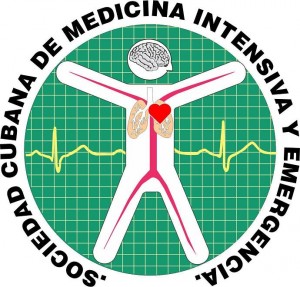Delirium Associated with Assisted Mechanical Ventilation in Critical Care Unit
Keywords:
intensive therapy, mechanical ventilation, deliriumAbstract
Objective: Establish the prevalence of delirium and identify predictors and mortality in the ICU of the San Gerónimo Private Sanatorium of Santa Fe, Argentina.
Methods: A cross-sectional descriptive study in ICU patients, requiring MV and a delirium diagnosis. The Richmond Agitation Sedation Scale (RASS) and the CAM-ICU were used to identify delirium. The variables studied were the medical record, variables attributed to the hospitalization and MV, and type of delirium. The SPSS® statistical analysis program was used.
Results: The prevalence of delirium was 93% of MV patients. It was classified as 58% hypoactive and 42% hyperactive. The mortality detected is 80%. No significant relationship was found between the type of delirium and age (p=0,722), sex (p=0,828), or the pathology that led to MV. No statistically
significant data were obtained on risk factors, days of total MV, hospital stay, sedoanalgesia, use of corticosteroids/neuroleptics, or admission scores, regarding mortality.
Conclusions: According to the data obtained, the prevalence of delirium associated with MV in SPSG is high, being closely associated with mortality, and not obtaining a relationship with the risk factors studied. We consider early detection necessary, as it influences days of MV and, consequently of hospitalization and mortality.
Downloads
References
1. Salluh JIF, Wang H, Schneider EB, Nagaraja N, Yenokyan G, Damluji A, et al. Outcome of delirium in critically ill patients: systematic review and meta-analysis. BMJ [Internet]. 2015 [citado el 18 de marzo de 2022];350(may19 3):h2538. Disponible en: https://jhu.pure.elsevier.com/en/publications/outcome-of-delirium-in-critically-ill-patients-systematic-review--3
2. Ely EW, Gautam S, Margolin R, Francis J, May L, Speroff T, et al. The impact of delirium in the intensive care unit on hospital length of stay. Intensive Care Med [Internet]. 2001 [citado el 18 de marzo de 2022];27(12):1892–900. Disponible en: https://www.ncbi.nlm.nih.gov/labs/pmc/articles/PMC7095464/
3. Ely EW, Shintani A, Truman B, Speroff T, Gordon SM, Harrell FE Jr, et? al. Delirium as a predictor of mortality in mechanically ventilated patients in the intensive care unit. JAMA [Internet]. 2004 [citado el 18 de marzo de 2022];291(14):1753–62. Disponible en: https://jamanetwork.com/journals/jama/fullarticle/198503
4. DSM-5 [Internet]. Psychiatry.org. [citado el 18 de marzo de 2022]. Disponible en: https://www.psychiatry.org/psychiatrists/practice/dsm
5. Ceraso DH, Dueñas-Castel C, Raimondi N, Celis E, Carrillo R, Ugarte Ubiergo S, et al. Encuesta iberoamericana sobre delirium en pacientes críticos. Med Intensiva [Internet]. 2010 [citado el 18 de marzo de 2022];34(8):495–505. Disponible en: https://scielo.isciii.es/scielo.php?script=sci_arttext&pid=S0210-56912010000800002
6. Sessler CN, Gosnell MS, Grap MJ, Brophy GM, O’Neal PV, Keane KA, et al. The Richmond Agitation-Sedation Scale: validity and reliability in adult intensive care unit patients: Validity and reliability in adult intensive care unit patients. Am J Respir Crit Care Med [Internet]. 2002;166(10):1338–44. Disponible en: http://dx.doi.org/10.1164/rccm.2107138
7. Tobar E, Romero C, Galleguillos T, Fuentes P, Cornejo R, Lira MT, et al. Confusion Assessment Method for diagnosing delirium in ICU patients (CAM-ICU): cultural adaptation and validation of the Spanish version. Med Intensiva [Internet]. 2010 [citado el 18 de marzo de 2022];34(1):4–13.
8. Mesa P, Previgliano IJ, Altez S, Favretto S, Orellano M, Lecor C, et? al. Delirium in a Latin American intensive care unit. A prospective cohort study of mechanically ventilated patients. Rev Bras Ter Intensiva [Internet]. 2017 [citado el 18 de marzo de 2022];29(3):337. Disponible en: https://www.ncbi.nlm.nih.gov/labs/pmc/articles/PMC5632977/






